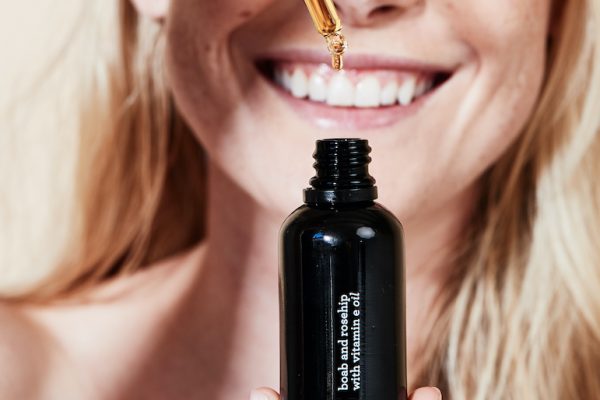I’m currently sitting cross-legged on a stool at my dining room table wearing floral overalls, knitted socks, and my husband’s cardigan. If last week’s me could see me now, she’d laugh and say “Oh darling, you’re cute” as she flicked her hair, climbed into her Mercedes Benz, and took another selfie.
Last week I attended New Zealand Fashion Week as a delegate for the second year in a row. NZFW 2018 was a blast, but this year the theme was a word I’m this close to getting tattooed on my forehead: Sustainability.
Image via New Zealand Fashion Week
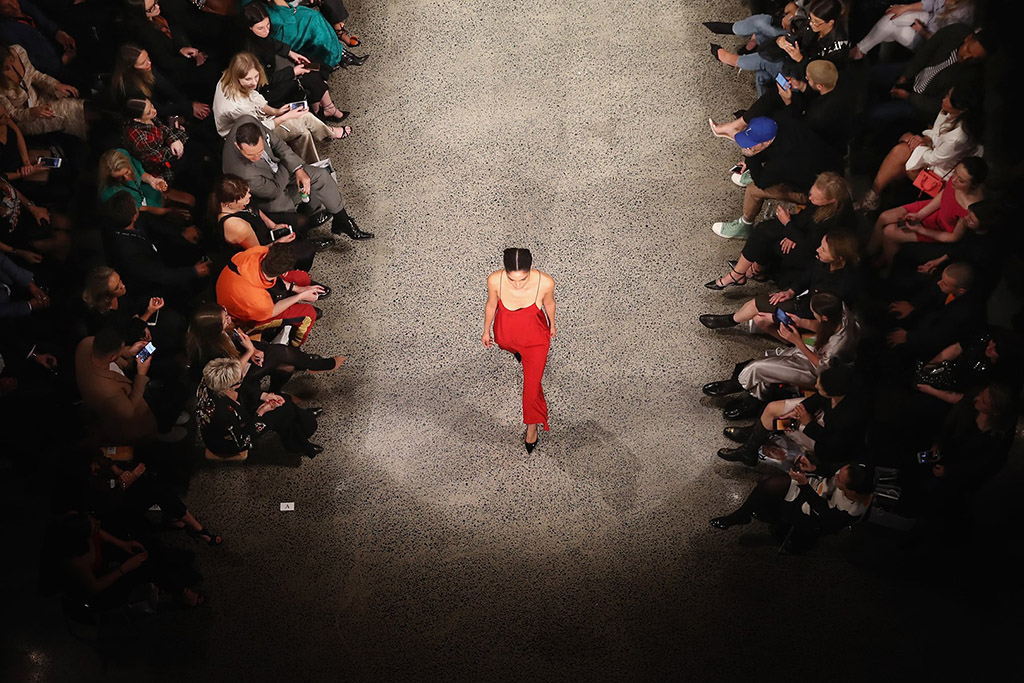
Upon arriving at NZFW, I had high hopes but little expectation, one dress in my suitcase (#outfitrepeater), a tote bag filled with home baking (#zerowaster), and a fashion critic’s eye ready to see how ‘sustainable’ looks on mainstream fashion.
Turns out, it suits her, but she’s still struggling to find the right fit.
Firstly, the fact that ‘sustainability’ was the main theme of NZFW, is a big win in its own right. Although I’d like to believe it, the world hasn’t fully embraced sustainability yet; especially when it comes to fashion. NZFW made a bold move to announce this as their 2019 theme, and regardless of how it was executed, I respect them immensely.
During NZFW 2019, I saw some of my very favourite sustainable fashion brands receive the loudest applause, mainstream brands try their best to take baby steps towards sustainability, and the public gets involved in important conversations that are generally hush-hush.
There were also many areas where I felt sustainability was not fully understood. I watched as simple fixes were missed, and easy opportunities to reduce waste and ultimately show NZFW’s respect for people and the planet were passed by.
No one is perfect, so let’s praise the good and constructively discuss the bad.
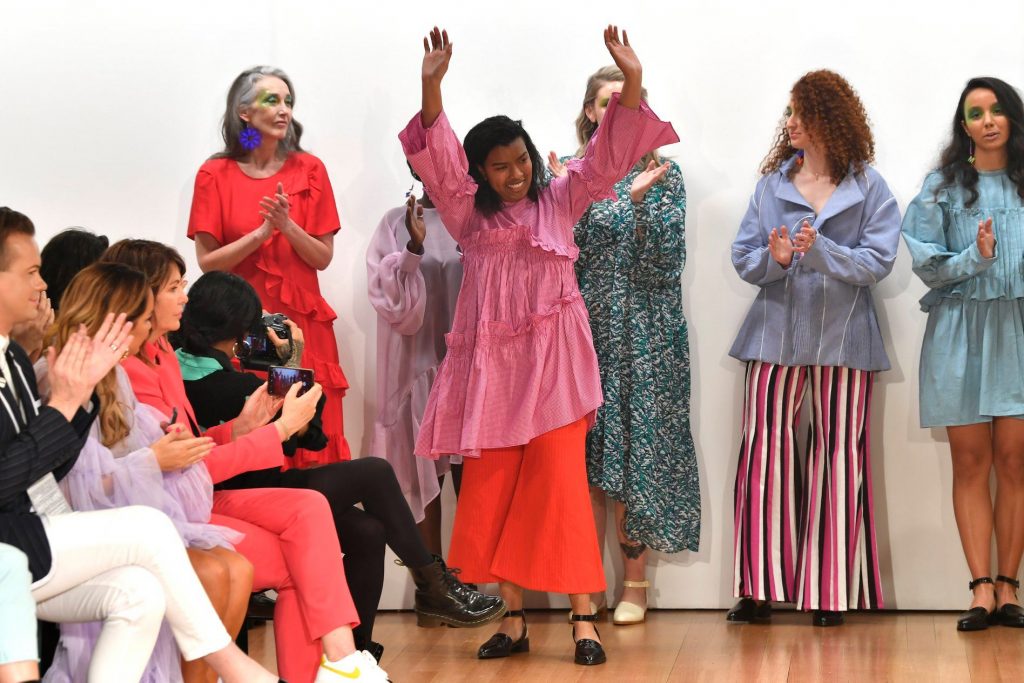
Diversity & Inclusion
This year’s runway shows were closer to demonstrating inclusivity and diversity than ever before. Heck, one designer, Havilah (above), completely aced it. I’m talking all body types, all ages, all ethnicities, and all needs. Nothing about this particular runway felt forced, token, or abnormal. While others would do well to take a page from Havilah’s book next year, it was encouraging to see less tokenism and more representation of our diverse humanity. I’m not saying every show was great; far from it. But we’re getting there.
Designers who embraced diversity and inclusion:
Maggie Marilyn: Maggie Hewitt, the designer behind Maggie Marilyn, is the current sweetheart of the New Zealand fashion industry. She’s held sustainability at the core of her brand since its inception. Her models varied in age and ethnicity, and she invited everyone involved in her label to the show- even her accountant! (below left)
Miro Moda: The Miro Moda showcase is a stand out every year. Full of established and up-and-coming designers, Miro Moda exists to showcase aspiring Maori fashion designers. They do this with thoughtful inclusivity of all cultures.
Ruby & Rain: Ruby & Rain produce New Zealand made fashion in sizes 14-26. Not only did their show begin with a moving audio recording exclaiming, “I’m tired of being told by others how I should live my life,” but their models were predominantly their own customers. Such fun!
Juliette Hogan: Juliette Hogan displayed a small range of clothes, worn by women you could imagine walking the street anywhere in the world. (below right)
Starving Artists Fund: Starving Artists Fund is a socially conscious, gender-neutral clothing brand who lives and breathes inclusivity and diversity in everything they do. Their NZFW show was no exception.
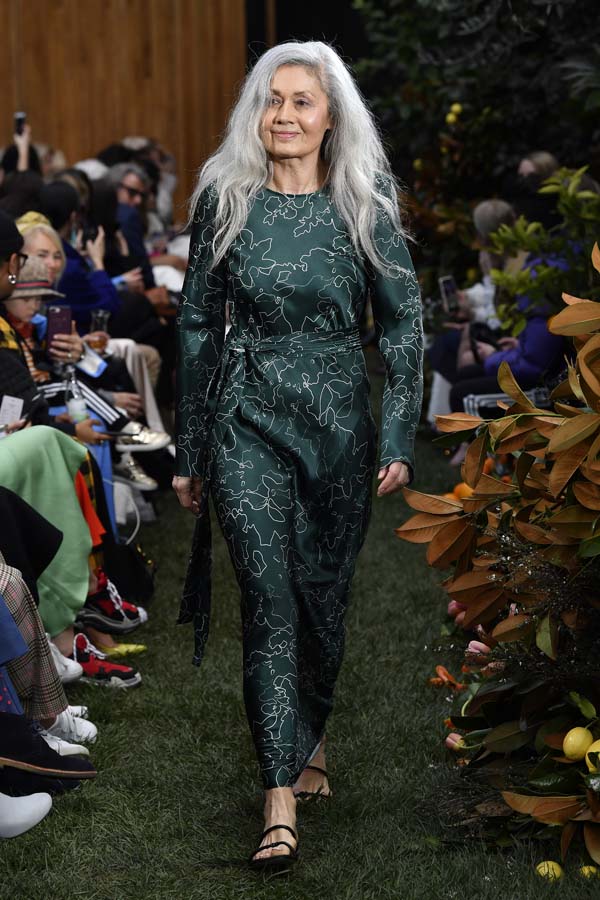
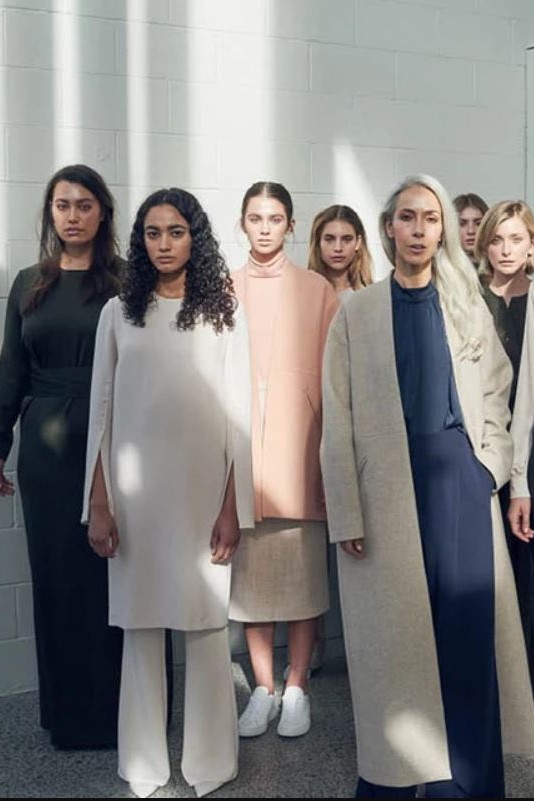
Waste
Let me get one thing off my chest… why would an event with the main theme of ‘sustainability’ have disposable coffee cups? Beats me. It’s insane to think we’re in 2019 and still use coffee cups that end up in the rubbish after just 5 minutes of use.
Imagine if it was compulsory to BYO cup. I’m sure we’d have initial complainers, but they’d quickly get over themselves just like they did around the plastic bag debacle. Pair this coffee cup malfunction with the plastic filled goodie bags, and you have an irritated Kate.
NZFW’s goal to keep “70% of waste out of landfill” could have been smashed out of the park with these simple waste issues addressed. I hope they get the memo next year.
Designers who reduce their fashion waste:
Kate Sylvester: Reuse, repurpose, and recycle are key values at Kate Sylvester. Their complimentary repairs service, compostable courier bags, and net-zero carbon emissions reduction target are impressive. (below left)
Greatest Friend: The epitome of waste-free fashion, is second hand. It made my heart soar to see Greatest Friend walk the runway, showing second hand is never second best. (below right)
Aurai Swimwear: Aurai Swimwear uses Econyl to create their swimwear: a product made from recycled nylon including old fishing nets, carpets, and plastics found on the beach.
Herriot: Instead of seasonal launches, which can create a lot of waste and result in redundant garments, Herriot release small capsules when you least expect it.
NOPE Sisters: These guys say “NOPE” to waste by using a zero-waste made-to-order model. Their latest pieces also use upcycled second-hand garments.
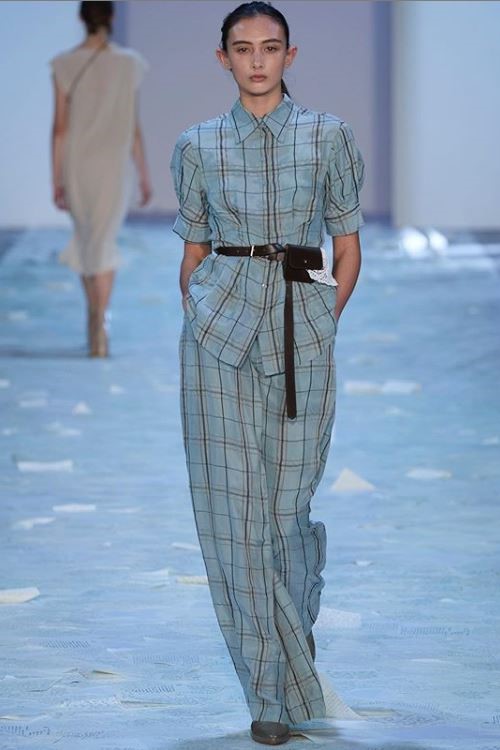
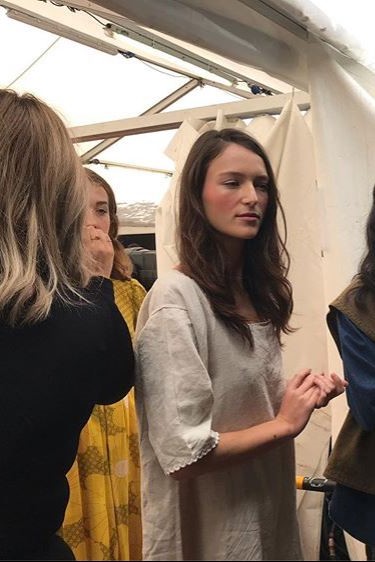
Ethical Production
There’s nothing so ironic as clapping for a designer who created something amazing, but employed people in terrible working conditions to make it. I was really impressed with the panel discussions held throughout the week around sustainability in collaboration with FashioNZ, The Ministry of Social Development, and Showroom 22. NZFW truly supported the public in speaking up about their desire to know who made their clothes.
Kathryn Wilson: As New Zealand’s premier shoe brand, Kathryn Wilson are proudly committed to ensuring fair working conditions and a supply chain that adheres to “legal, moral and ethical standards.”
Twenty-seven Names: Proudly New Zealand made, Twenty-seven Names rock undercover ethical fashion. They make gorgeous garments everyone loves the look of, while sneakily being bosses at ethical production.
Mina: Along with their timeless pieces that scream less-is-more, Mina’s ethical production line makes me hopeful for a sustainable fashion future. The garments are made by a ‘talented group of hands’ in New Zealand. Mina describes every human involved in the making of their garments transparently on their website. (below left)
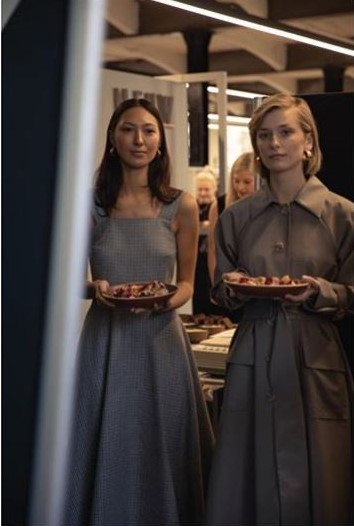
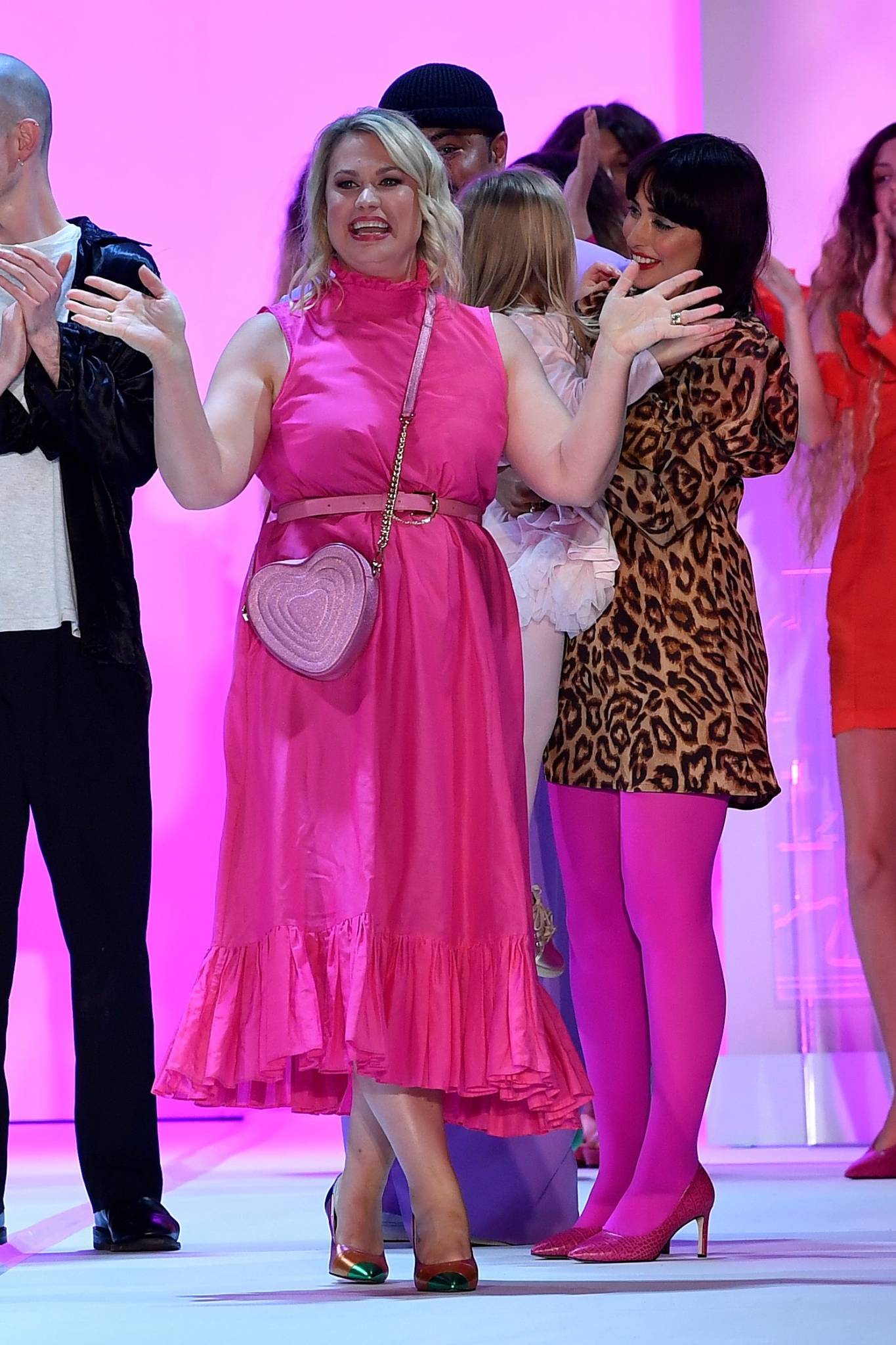
New Zealand Fashion Week was a week I will never forget
I was impressed, shocked, grateful, scared, hopeful, let down, frustrated, excited, and abundantly happy, all at the same time. Their work to promote sustainability and start a conversation was admirable, and I’m crossing my fingers and toes that NZFW’s efforts to develop a sustainable fashion industry will never cease.
My hope is that one-day sustainability will not be a theme, but a reality. For now, it’s important we praise those thinking outside the box and asking the questions: how does this impact planet and people? How will this alter our future on earth?
New Zealand Fashion Week may have come and gone, but it’s left me with a stronger sense of personal style, an appreciation for time to eat lunch, many plastic-filled goodie bags, and hope for the future of fashion.
Images via brands
